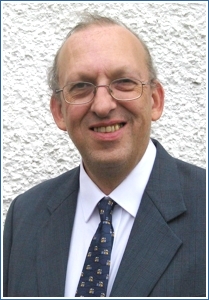History of BCD Audio
At the very beginning, Mike Law worked at Alice Mixers as a summer job during University and never got around to a proper job after getting his degree. On the demise of Alice mixers in 1987 he set up Acrone Ltd with the help of two Swiss recording studios and by 1990 was running Acrone Ltd T/A BCD Audio in its own right.
The company balanced its efforts on its own products with product development for others; we have tended to keep quiet over these product developments, and some were produced under NDA terms.
These secrets are partly disclosed here..
Alice mixers had designed a digitally controlled mixing console, the Silk series, and had made some sales, including Greenwood and Blackwood studio in Switzerland. The digital control and use of solid-state switching became a building block of all future designs. Mike spent many years supporting these mixers and learnt about changing electrolytic capacitors in big consoles ( V series ) and the importance of reliability in products. The Silk mixers also inspired the 66 series design.
Alice mixers produced a telephone balance unit (TBU) which is used in radio studios to interface telephones to the console. Apart from isolation, the biggest problem is side-tone rejection to separate the go and return signals on the two-wire telephone line. This is complex, as the line impedance is unpredictable, and is also related to the time-delay between the subscriber and the telephone exchange. Mike Law studied these problems for his final year project at university.
When Alice mixers went bust, Ted Fletcher and Adam Francis set up Intervox Voice products to produce multichannel speaker-phone systems for the money markets, involving 1000’s of TBUs.
Mike designed the Intervox 224 for them, which used a three-servo analogue cancellation technique. Later Mike also designed the Prophet card for them, which used a Texas DSP chip and digital echo cancellation by FIR filter techniques. An American company (Bridge) muscled onto the UK market, the technology behind money markets changed, so it all kind of collapsed along with the Twin Towers in New York, but the Sonifex HY03 benefited from this work.
By this time, BCD Audio were producing custom products in its own right, but still found time to develop the odd radio mixer for the industry. This culminated in the Clyde Synergy mixer in 2014, where all of the audio mixing and processing was achieved in one low-cost FPGA with embedded processors to a BCD Audio design.
Technology change, Brexit , Covid, supply issues and approaching 60 meant that by 2018, Mike decided to down-size the company. Overheads were slashed, the factory sold, and a dedicated design office established in the grounds of Angerton, in rural Hampshire.
BCD Audio still produce the Black box range, support existing customers and products, but can also devote time to product development.
During that time, an audio hub was developed for a UK defence contractor. This uses broadcast audio ideas and quality integrated with a ROIP secure communications third-party module. Over 40 units were produced with the free-lance help of Chris Finney (ex Alice and BCD Audio) among others, and was successfully delivered on time in 2021. Mike Law designed the circuitry, circuit board and supervised the mechanical design. Mike also oversaw the EMC certification with the help of db Technology in Cambridge and his own EMC equipment.


